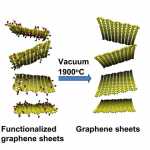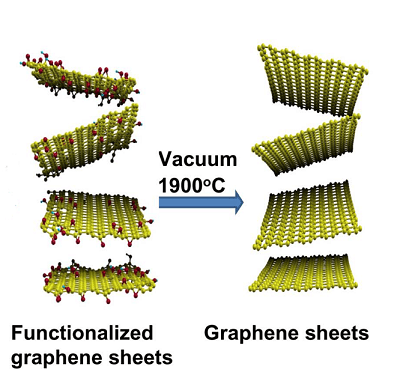 From sensors to solar cells, graphene has a range of exciting applications. Most rely on the ideal 2-dimensional structure of graphene, composed entirely of carbon hexagons, which gives graphene its excellent electrical and chemical properties.
From sensors to solar cells, graphene has a range of exciting applications. Most rely on the ideal 2-dimensional structure of graphene, composed entirely of carbon hexagons, which gives graphene its excellent electrical and chemical properties.
The production of high quality graphene sheets is a pressing concern. One approach is to use graphite oxide. However, it must be chemically reduced in order to improve its conductivity. One side effect is the presence of impurities that reduced the crystallinity and electrical conductivity.
Prof. Y. H. Lee and coworkers have used a physical rather than chemical approach to obtain crystalline graphene sheets. They exfoliated graphite oxide in water-based solution and then annealed the resulting sheets at high temperature (1900°C) and under high vacuum.
They obtained graphene sheets with a minimal oxygen content (no oxygen peak was observed using XPS) and high conductivity (56 000 S m-1), higher than samples produced using chemical reduction techniques.

















